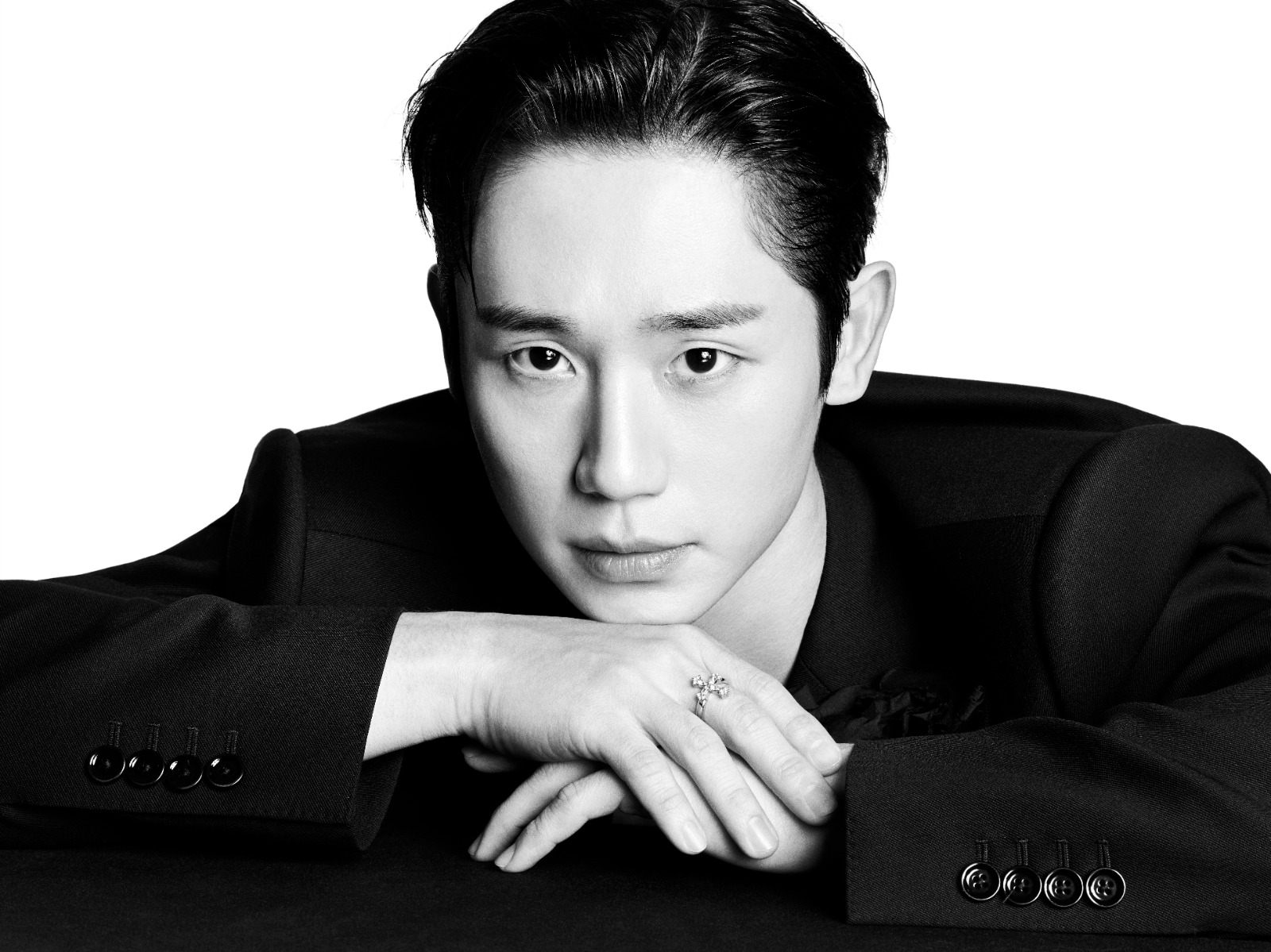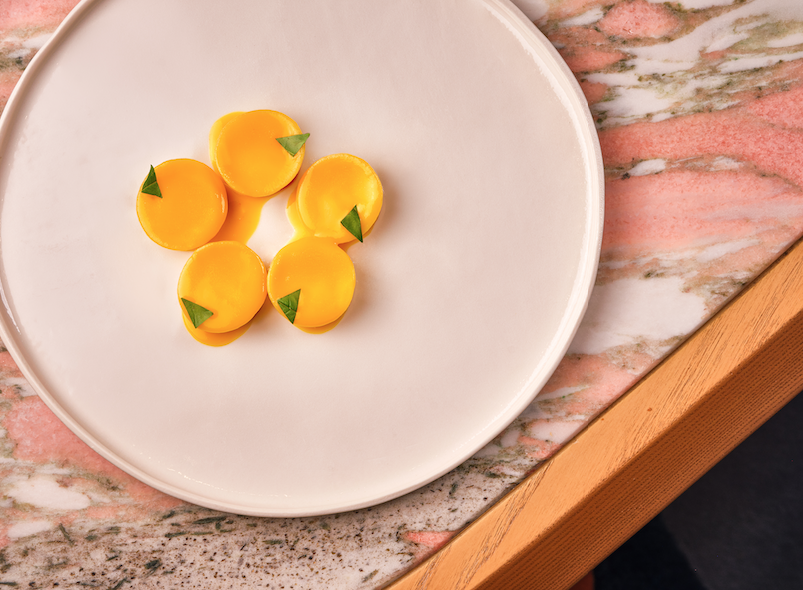Ankôma's Frankie Wong on his journey and the inspiration behind the restaurant
May 27, 2024
Tucked away in Tsim Sha Tsui, Ankôma offers a masterful blend of Hong Kong, France and Japan on the plate. Frankie Wong, the up-and-coming chef de cuisine behind it, talks to Stephenie Gee about his journey, what makes a successful chef, and the inspiration behind the intimate eight-seater

How did you start cooking?
I’ve loved eating and cooking from an early age. I also grew up watching a lot of different cooking shows
like Hell’s Kitchen and Iron Chef, which played a part in culminating my interest in cooking. My family influenced me a lot, too. They would cook at home and take me out to eat at different restaurants, which made me realise that the level of satisfaction and gratitude that I got from eating something delicious was higher than anything else.
Before Ankôma, you were at The Peninsula hotel and then Écriture. What was something you learned that you continue to carry with you today?
I learned a lot, and not just cooking-wise. I learned what it means to be a good chef. And being a good chef isn’t just about you. If you don’t have a good team to help you, you’ll never succeed. There’s only so much an individual can do, which is why teamwork is so important for me. When Ankôma first opened, it was hard transitioning from just a chef to a more managerial role, but my time at Écriture helped me a lot in terms of what good management is – to be able to guide your staff to exceed standards.

I’ve also learned a lot when it comes to culinary skills. For example, I learnt from chef Maxime [Gilbert] the extraction technique, which was invented by Yannick Alléno. Basically, you use the right cooking temperature for different ingredients to bring out their essence. This is something I still use today for some of our sauces. The ratatouille consommé, for example, in the hokkigai (surf clam) dish in our spring menu is made with this technique.
What was the inspiration behind Ankôma?
Ankôma is about combining my Hong Kong background with French and Japanese influences, which may be in the form of cooking techniques or ingredients. An example would be our main course, the lamb saddle. The sauce is a very traditional gravy, a bone jus, but we mix in Japanese yakitori sauce. The result is surprisingly good and it goes really well with the lamb. Then there’s our crab tart, made using Zuwaigani crab and French puff pastry for the shell. In the West, people pair crab and seafood with lemon or aioli. But in Hong Kong, we eat it with vinegar. So inspired by that, we paired the crab meat with a vinegar jelly.
I could smell it when I walked in.
It’s a very sour smell. It’s not the most pleasant, especially when it’s hot. But it goes away once it’s cold and when you eat it.

A menu highlight would be the roast chicken. What’s special and different about the Ankôma roast chicken?
Right, a lot of Hong Kong restaurants serve roast chicken, so how do we put our own special spin on it? First, to reference my Hong Kong background, we use the local three-yellow chicken and a traditional Guangdong cooking technique that involves coating the chicken in a glaze that usually includes maltose and vinegar, to make the skin crispy. French cuisine emphasises the natural flavours of an ingredient, and relies on the accompanying sauce to elevate the dish. So we put a lot of effort into the accompaniments. For the sauce, usually when it comes to the main course, it’s a little more heavy and rich. We wanted to have something lighter for the Asian palate, but still flavourful. So we made a French vin jaune (yellow wine) sauce. We double boil the chicken bones to create a stock and then cook it into the vin jaune for extra umami. On the side, we have Hokkaido Nanatsuboshi rice topped with ikura, which again brings umami. So these three elements are all umami-packed.
You mentioned the importance of a good team. So what do you look for in a team member?
I don’t call them my subordinates because we’re a team and there’s no hierarchy here. We’re all on the
same level, looking out for each other. But what is most important for me when looking for a team member is their communication skills, and also they really need to be passionate about cooking. If they’re not passionate, they’re not going to be thinking about how to improve. For me, I don’t think experience is a top priority. I’ve been working in this field for nine, 10 years, but people will look at my age and think I’m too young and pass the opportunity to someone else. I think a good chef isn’t determined solely by their years of experience or age, but also their willingness to learn, their passion, and their ability to put their knowledge and skills into practise.

What do you hope guests take away from dining here?
Most fine-dining restaurants can be quite formal and stuffy. We want to create an atmosphere that is more chill and cosy. The reason we have an open kitchen is so that there can be interaction. And not just between the chefs and the guests. There was one time we had customers from two different groups exchange wines, and by the end of the dinner, contacts as well. It doesn’t happen all the time, but it’s something we like to see. We want our customers to enjoy fine dining but in an easygoing environment.
What’s next for you and Ankôma?
I’m going to continue to work hard to hone and improve my culinary skills so I can create better dishes and give our customers a better experience. I want to provide them with a better environment because a good dining experience isn’t just about the food. There’s different aspects like, for example, wine pairings, which we don’t currently have. So I definitely want to move to a bigger space. I also want to have the opportunity to collaborate with other chefs or even cocktail bars in the future.
Also see: Chinesology’s chef Saito Chau on Tang-ren gastronomy and East-meets-West cocktails





























